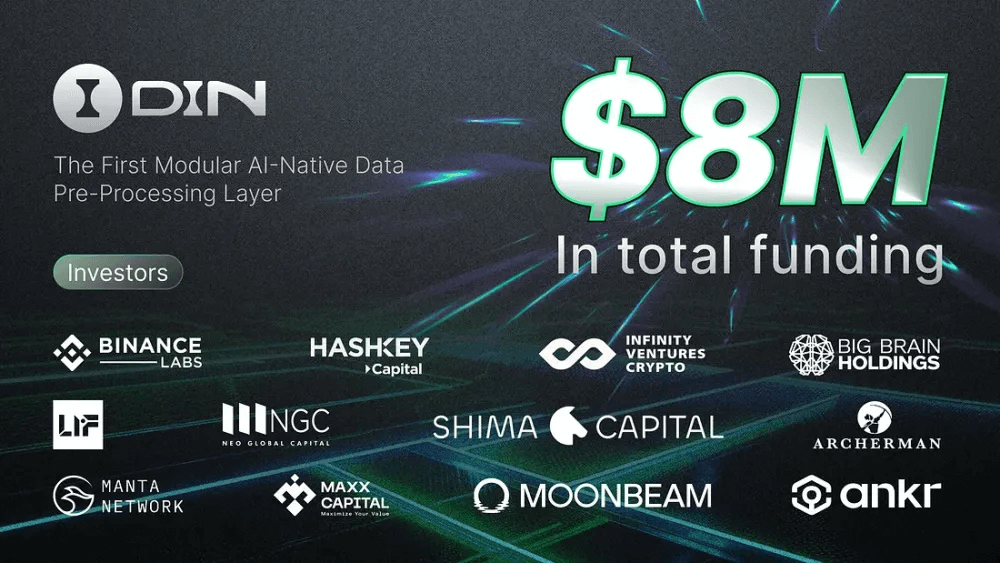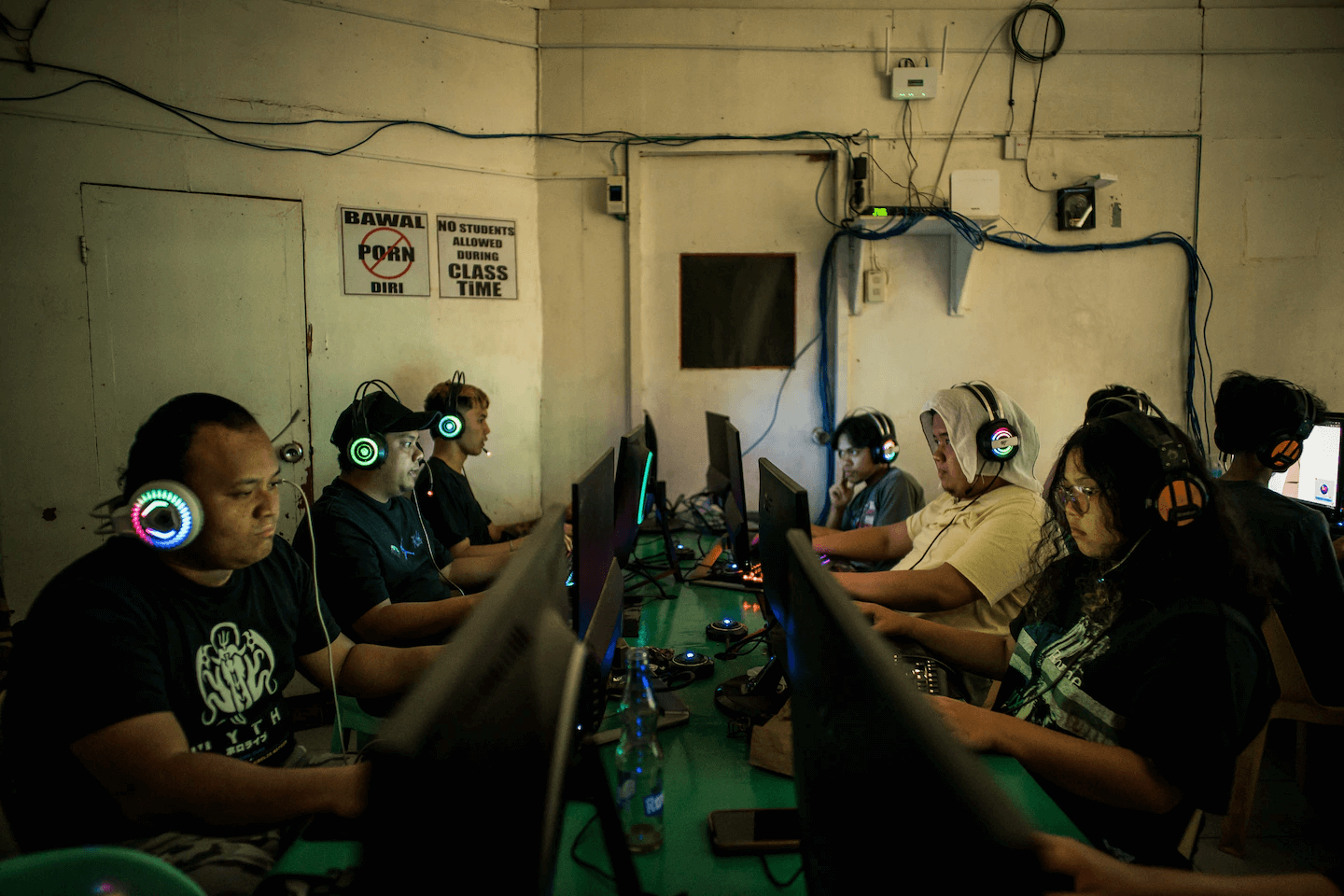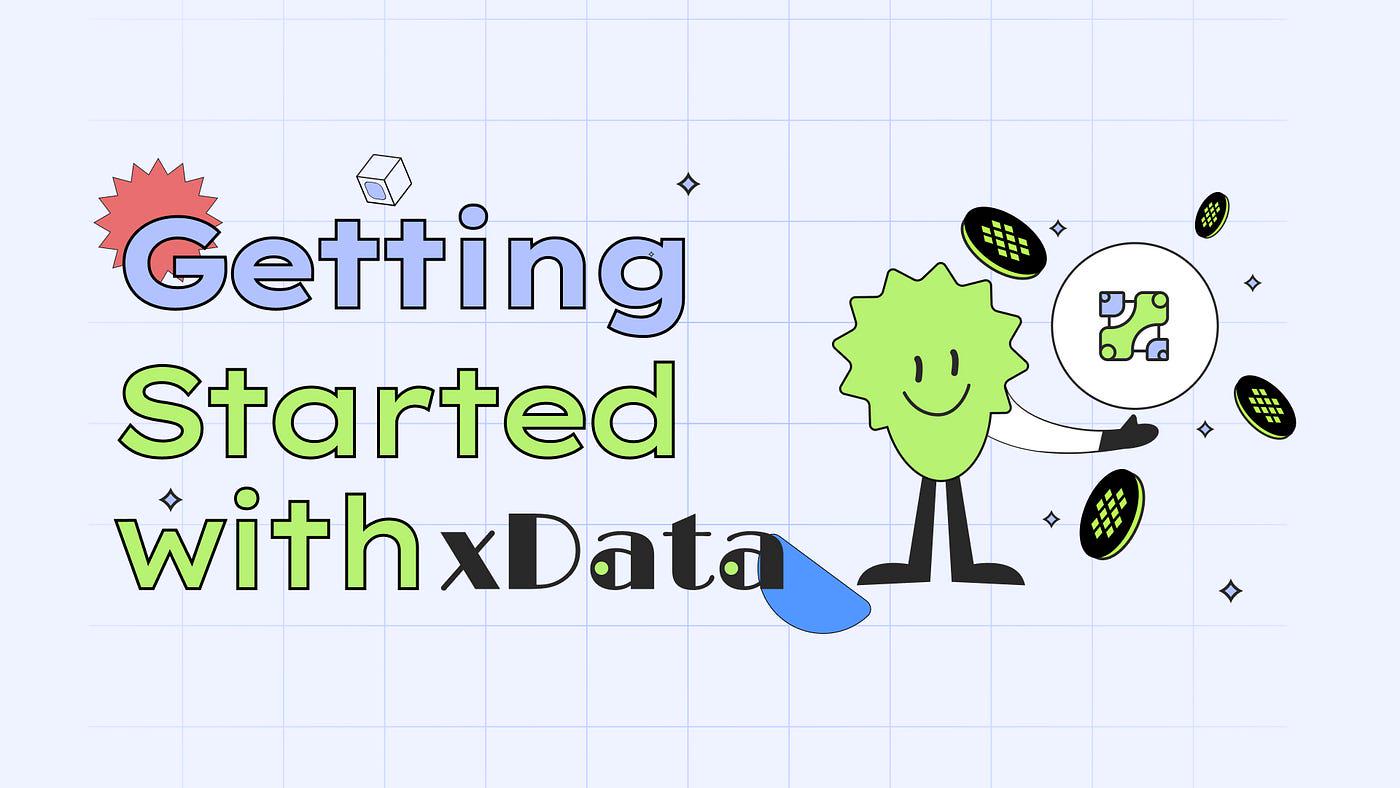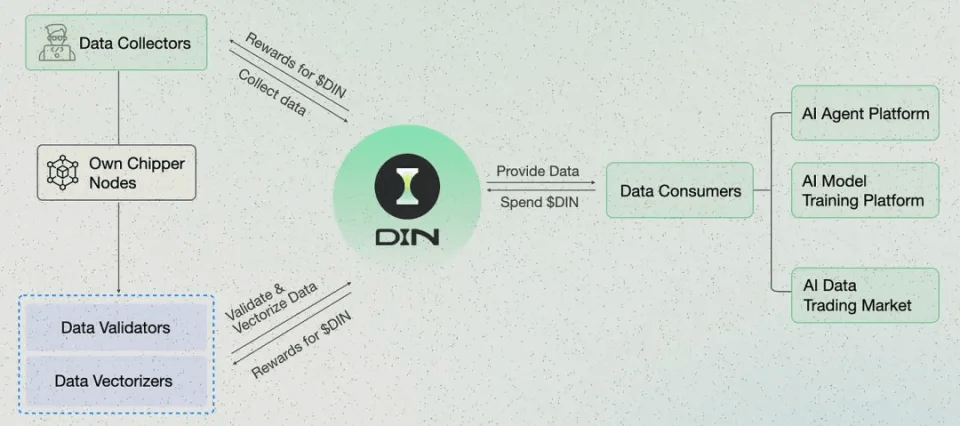
Author: Zen, PANews
With the rapid development of AI technology, data has become the core driving force behind its growth, as important as oil is to modern industry. The acquisition, labeling, and processing of high-quality data are the cornerstones of AI model training. However, the heavy reliance on manual processing, inefficiency, high costs, and inconsistent quality in this process pose significant challenges to the existing industry chain.
As Binance founder Zhao Changpeng (CZ) stated, tasks such as AI data labeling are very suitable for completion via blockchain, leveraging low-cost global labor and enabling instant payment through cryptocurrency, thus breaking geographical limitations. CZ also mentioned that more tools are still needed and called on developers to collaboratively build a decentralized AI data processing ecosystem.
In fact, since the rise of the artificial intelligence boom, many projects have begun to focus on decentralized AI data businesses, but few have successfully implemented a viable business model. DIN, which has performed outstandingly within the BNB ecosystem, is one such example. DIN currently boasts over 30 million registered users and a million daily active users, frequently ranking at the top of the AI Dapp leaderboard on BNB Chain. More importantly, DIN not only drives the decentralized AI data economy but also begins to truly empower the development of traditional Web2 industries.
DIN: The Certificate of Employment for Data Pipeline Workers in the AI Era
DIN is the first modular AI-native data preprocessing layer, aimed at establishing a data intelligence network based on the collaboration of people, data, and AI, allowing everyone to process data for AI and earn rewards. To date, DIN has raised a total of $8 million, having completed a $4 million seed round led by Binance Labs last July, followed by a $4 million pre-listing financing round in August this year, with participation from Manta, Moonbeam, Ankr, Maxx Capital, and others.

In the interview, DIN founder Harold stated that if he were to introduce DIN in the simplest terms, it could be called "the certificate of employment for data pipeline workers in the AI era," allowing ordinary people around the world to participate anytime and anywhere without barriers, enjoying the borderless flexible payments brought by crypto, and sharing in the continuous cash flow dividends generated by AI development. "AI needs massive amounts of data to promote its development, so everyone should benefit from the data they generate. DIN hopes to act as a bridge, allowing the data produced by everyone to be recorded and enabling everyone to profit."
The name DIN comes from the acronym for Data Intelligence Network. Over the past three years, DIN has focused on providing products and services around "data," covering on-chain data, social media content, and other off-chain data, and its predecessor was the Web3 data intelligence company Web3Go. Before founding this project, Harold had been engaged in the artificial intelligence industry, and the AI applications developed by his team, such as steel surface defect detection, have also been implemented. Thanks to the team's years of accumulation and experience in big data, artificial intelligence, and communications, and their deep cultivation in the data track, DIN has formed a mature service delivery system and has achieved profitability every year.
Blockchain Realizes the Data Crowdsourcing Revolution
As is well known, algorithms, computing power, and data are the three core elements of artificial intelligence, with data being the foundation of AI development. Without sufficient data support, any advanced algorithms and computing power are meaningless. Therefore, the "data factories" for AI models have become increasingly crucial in the AI wave. The industry leader Scale AI completed its latest round of financing at a valuation of $13.8 billion in May this year, raising up to $1 billion, led by top Silicon Valley fund Accel, with participation from tech giants like YC, Nvidia, Amazon, Meta, and AMD.
Scale AI's client base includes various sectors such as healthcare, defense, e-commerce, and government services. It profits by providing high-quality data to clients while shifting most of the quality assurance responsibilities and costs to individual task executors. Scale AI's crowdsourcing platform, Remotasks, has established dozens of institutions in regions like Kenya, the Philippines, and Venezuela, employing thousands of data labelers.

However, this profit concentration in centralized companies does not adequately incentivize participants and fails to fully liberate labor. According to The Washington Post, Scale AI pays workers very low wages, often delaying or withholding pay, and provides almost no recourse for workers. Human rights organizations and labor researchers have stated that Scale AI is one of many U.S. AI companies that do not comply with basic labor standards for overseas workers. It is evident that behind the AI boom dominated by centralized and monopolistic enterprises lies a vast army of overseas laborers in "digital sweatshops," who support the flourishing AI industry but often face exploitation in labor-intensive jobs without receiving due compensation.
"The model of producing and collecting data is entirely centralized, which we believe is detrimental to the long-term development of AI technology, as everyone is a producer of data but does not benefit from it." Regarding the issues of data monopoly and high centralization, Harold stated that based on the decentralized and transparent characteristics of blockchain, by combining AI data with it, data can be managed through blockchain, recording everyone's data production process, and ultimately using blockchain for settlement, allowing data-providing users to continuously earn profits.
Core Product xData and Chipper Node Connect B and C Ends
"DIN provides a full-stack solution covering data collection, labeling, validation, and vectorization," Harold introduced. Its core product xData focuses on collecting and labeling Twitter content data, enabling targeted collection of content around specific projects or topics, consolidating scattered materials into a complete database. Through xData, users can participate in AI data collection and labeling at low cost and low barriers while earning rewards; on the other hand, clients can gain more exposure opportunities while meeting their data collection and processing needs. To date, xData has successfully collected and labeled over 100 million tweets.

AI models undergo multiple iterations, and their training process requires not only a large amount of data but also ensures the high quality of that data. "High-quality data is key to improving model accuracy and reliability, while low-quality data can lead to biases or even erroneous results," Harold stated. During training and fine-tuning, AI models require a large amount of cleaned, validated, and qualified data.
In the DIN ecosystem, Chipper Node plays an important role in data "quality inspection" and optimization. Harold pointed out that Chipper Node utilizes the idle computing power of users' edge devices to validate, classify, clean, and vectorize the raw data collected by xData. Additionally, Chipper Node not only facilitates the conversion of rewards within the network but also promotes the efficient operation of the economic system, allowing users to earn rewards through mining anytime and anywhere, ultimately achieving a payment closed loop for AI data contributors.
Through the synergy of Chipper Node and xData, DIN acts as a bridge connecting B-end enterprises and C-end users. Enterprises can obtain verified high-quality data more efficiently and at a lower cost through the DIN ecosystem, while users can contribute data content and earn rewards through daily participation at low barriers. This model not only achieves efficient matching of supply and demand for data but also significantly enhances users' sense of participation and earning experience, injecting strong momentum into the rapid development of the DIN ecosystem. Harold stated that the total number of DIN users has surpassed 30 million, with daily active users reaching 700,000, and DIN processes 1 million on-chain transactions daily, showcasing a highly active and scalable blockchain ecosystem.
It is worth mentioning that DIN's data is stored on the decentralized storage infrastructure BNB Greenfield, which significantly reduces storage costs and improves storage efficiency by sharding data and storing it across multiple nodes. Additionally, thanks to the optimized distributed storage architecture, Greenfield can provide access speeds close to traditional Web2 cloud storage while ensuring the security and reliability of decentralization. This allows DIN to ensure that while providing incentives to users, it also considers the security and privacy protection of data transmitted across the network.
Empowering Traditional Web2 Industries, DIN Has Truly Achieved Product Implementation
Unlike most AI+Web3 projects that remain at the stage of envisioning large-scale adoption, the AI data provided by DIN has already begun to empower the development of traditional Web2 industries. Harold revealed that several months ago, DIN collaborated with the data labeling company Hexu Ju under AISpeech to label and collect voice data for AISpeech's small language projects through BNB Chain.
AISpeech, a domestic unicorn in the field of voice technology, is on par with iFlytek, focusing on core technologies such as speech recognition, speech synthesis, and natural language processing. Its technology is widely used in products like automotive navigation and in-car voice assistants, providing drivers with efficient and convenient intelligent interaction experiences. In the context of a global market, in-car systems must support multilingual interactions, especially in environments of cross-border sales and multicultural integration. This requires a large amount of high-quality voice data in small languages and dialects to train speech recognition and synthesis models. Traditional data labeling methods are often costly and time-consuming, making it difficult to meet the demands of rapid iteration.

However, by utilizing DIN's blockchain network to distribute the tasks of labeling and collecting small language voice data to a global distributed labor network, efficiency and data coverage will be significantly improved. On one hand, DIN's platform ensures the high quality and consistency of labeled data through a multi-layer verification and review mechanism, and the multilingual coverage allows AISpeech to quickly build and optimize its small language voice models. On the other hand, all data processing workflows are recorded on-chain, ensuring transparency and trustworthiness, which is crucial for voice technology companies under increasingly stringent privacy protection and data compliance requirements.
DIN's technology and business model not only prove the feasibility of decentralized data networks but also inject new growth momentum into traditional industries, becoming an important driving force for the integration of Web2 and Web3. Looking ahead, DIN is expected to expand the capabilities of its data intelligence network to industries such as healthcare, education, and retail, helping traditional enterprises achieve intelligent transformation through AI data processing.
Sticking to Principles in a Bear Market, Contributing to the Development of the BNB Chain Ecosystem
In the recently concluded bear market, issues such as poor market liquidity, low user activity, and a lack of user-validated products were prominent, leading to significantly increased costs for acquiring users due to constant internal competition. These challenges undoubtedly placed immense pressure on project operations and development. Harold admitted that while many projects were "making quick money" through short-term opportunities, they felt a bit envious; however, DIN ultimately chose to focus on long-term value creation rather than chasing short-term profits, rushing to monetize, or catering to market fluctuations.
"We consider ourselves a pragmatic and down-to-earth team," Harold added, stating that DIN has always aimed to do the right thing. This process may occasionally progress slowly and can be painful, but this is the norm in the frontier technology field; only by persevering can one go further.
From promoting on-chain data analysis to achieving a user-friendly AI agent platform, and pioneering decentralized AI data preprocessing tools, in addition to positioning itself as an AI data infrastructure, the DIN team has consistently deepened its efforts within the BNB ecosystem over the past few years. After receiving support in terms of funding and resources, DIN has also contributed to the development of this ecosystem. For example, the pre-mining of the Chipper node and the xDIN trading launched by DIN not only brought significant trading volume and on-chain activity but also resulted in over 40,000 operational nodes and more than 50,000 high-quality node holders. This further activated the on-chain data ecosystem of the BNB Chain and enhanced user participation.
Additionally, recently, DIN brought nearly 7.5 million transactions and 400,000 exposures to the BNB Chain in just one week through node pre-mining, Binance Web3 wallet airdrop activities, and the Binance Square essay competition. Moreover, DIN helped Binance attract over 260,000 new user registrations in just 10 days.
Upcoming TGE and L2 Blockchain Based on BNB Chain
Coinciding with a bull market, DIN is about to reach a critical juncture in its project development. Harold stated that DIN will build a dedicated L2 data chain on the BNB Chain to further promote the realization of the decentralized AI data network concept. The soon-to-be-launched DIN token will serve as the core fuel for this L2 chain, used to pay for gas fees for on-chain operations such as data storage, node operation, and AI agent creation and trading, becoming the hard currency of this decentralized network.

Furthermore, the DIN token adopts a deflationary model, where each token consumption will burn DIN, thereby continuously reducing market supply and creating scarcity value. At the same time, the DIN team plans to regularly use profits generated from its Web2 business to repurchase tokens, further strengthening its value support. Harold revealed that DIN achieved profitability two years ago, and its mature Web2 data business provides stable and sustainable support for Web3 development.
In this round of the bull market, as the liquidity of BNB has significantly increased and prices have soared to historical highs, market confidence in its ecosystem development is at an all-time high. Many industry practitioners analyze that the BNB Chain is likely to announce significant actions in the short term. The launch of the DIN L2 data chain comes at the right time, and based on its performance in recent months, it may fully benefit from the ecological dividends of the BNB Chain, jointly promoting the development of the Web3 data economy.
Overall, with its strong performance in the BNB ecosystem and a mature business model, DIN is gradually realizing the vision of a decentralized AI data economy. With the upcoming L2 data chain and token economic system, DIN not only injects new vitality into the cryptocurrency industry but also provides more possibilities for AI and traditional data industries.
免责声明:本文章仅代表作者个人观点,不代表本平台的立场和观点。本文章仅供信息分享,不构成对任何人的任何投资建议。用户与作者之间的任何争议,与本平台无关。如网页中刊载的文章或图片涉及侵权,请提供相关的权利证明和身份证明发送邮件到support@aicoin.com,本平台相关工作人员将会进行核查。




